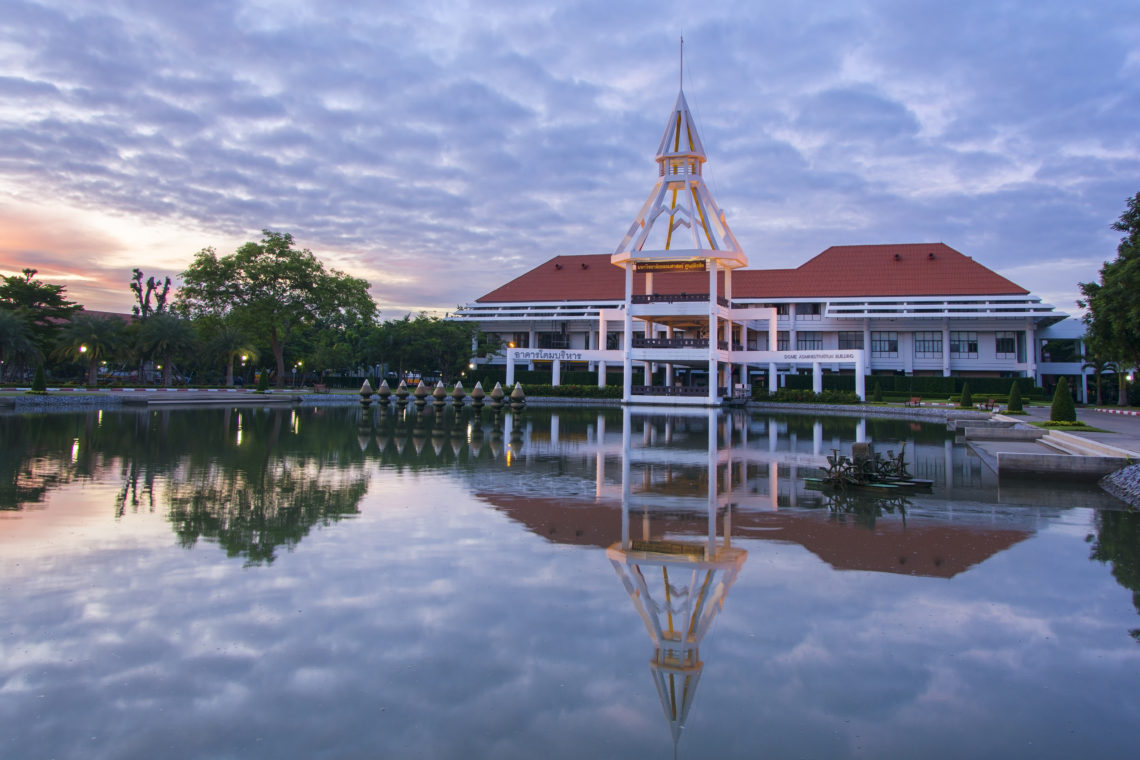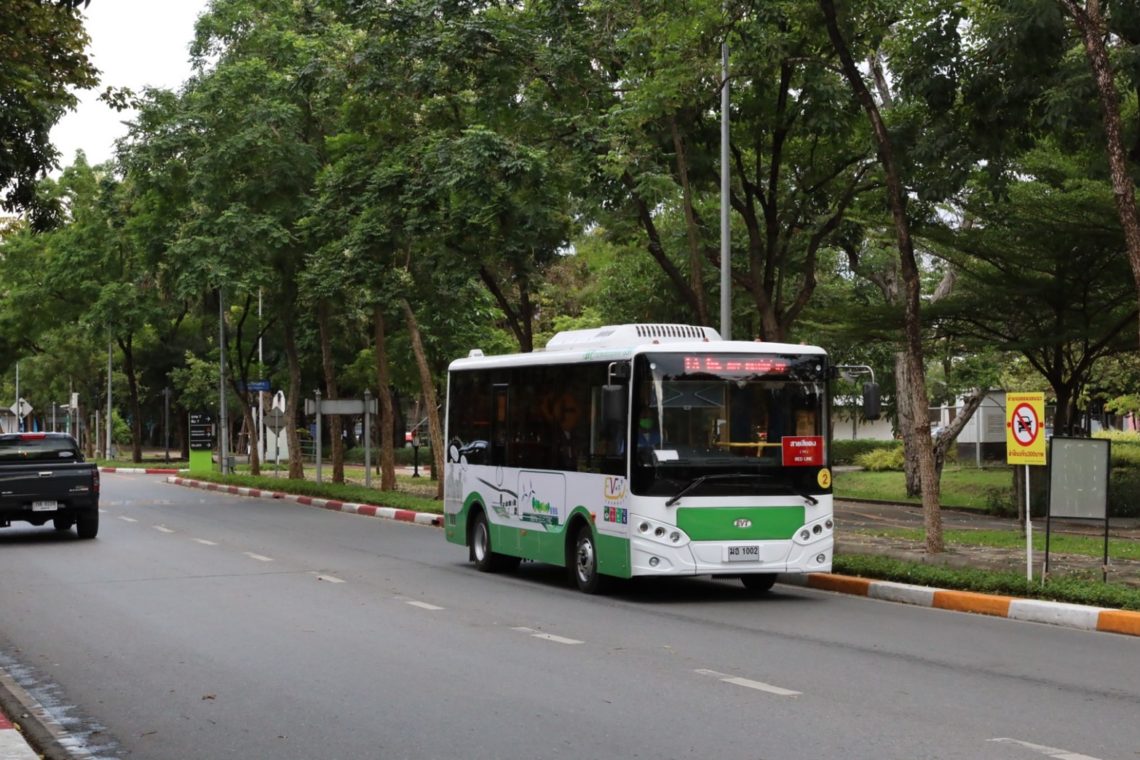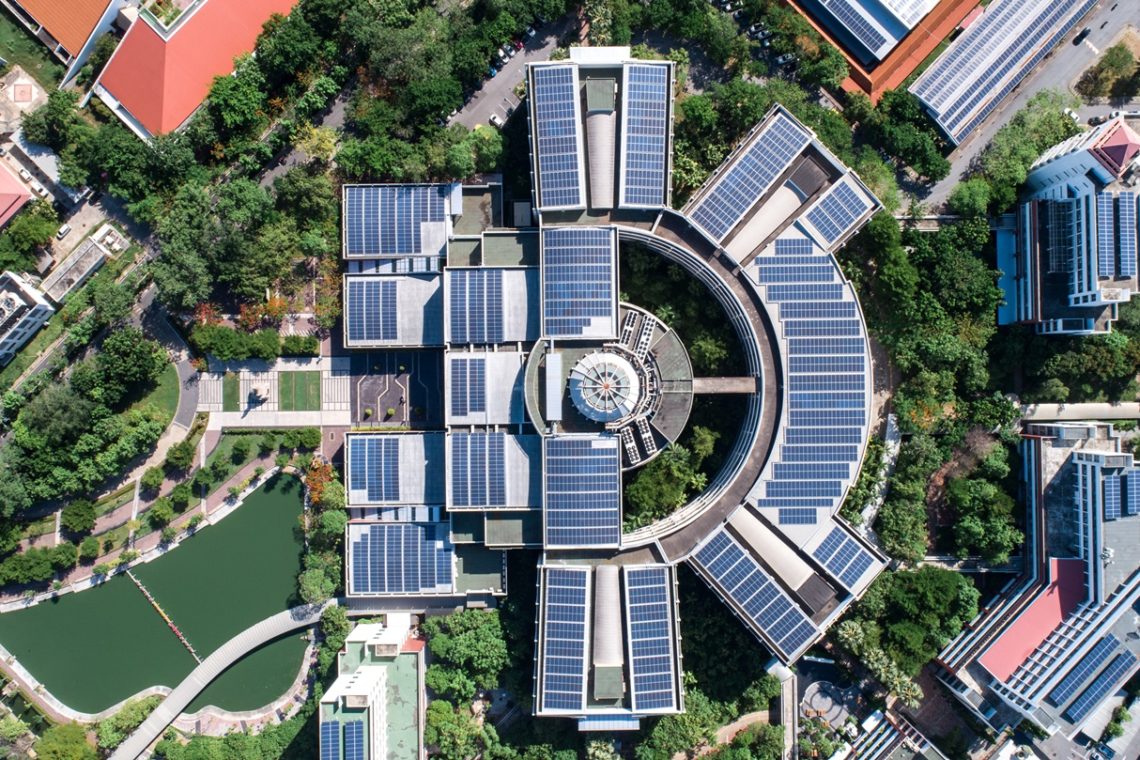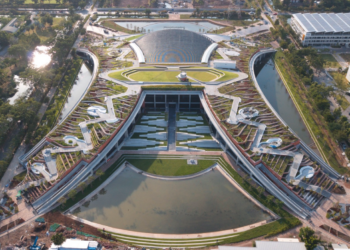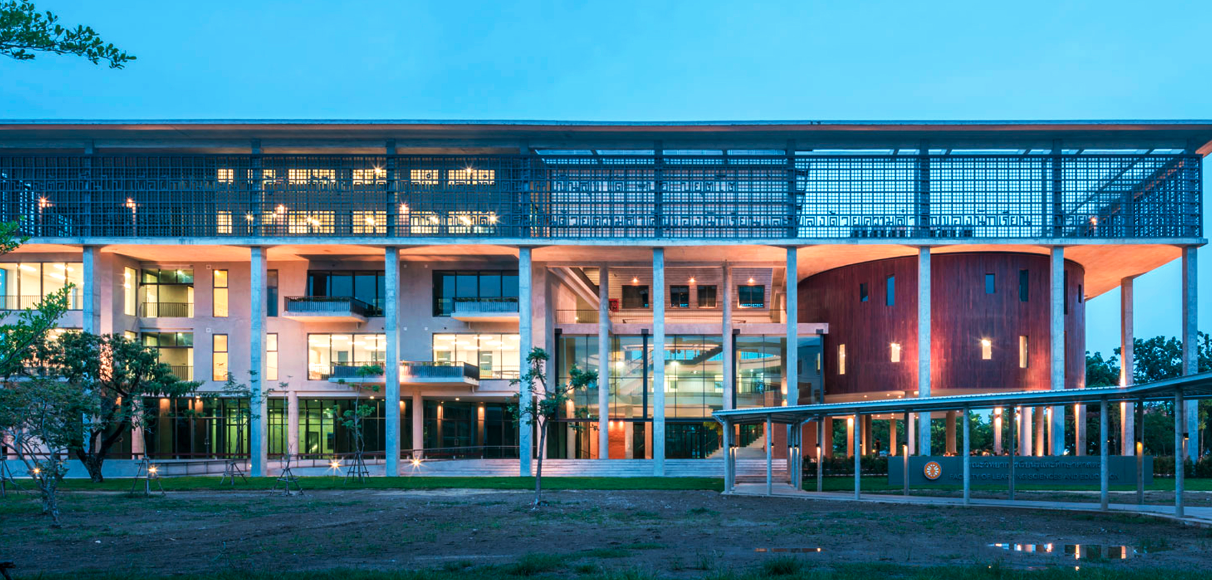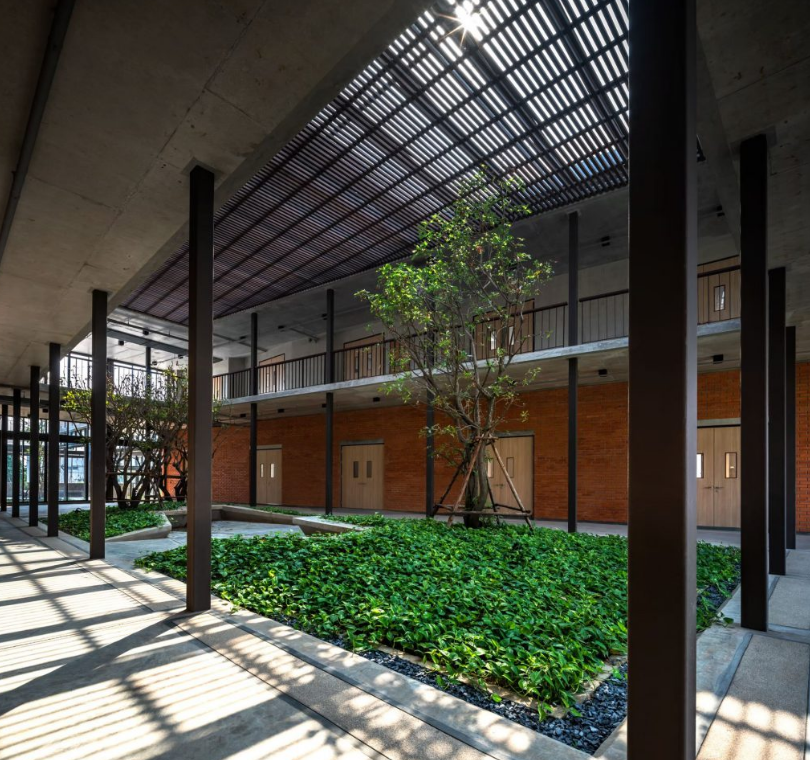Thammasat signed MOU agreement with four private companies that will support EV car including charging stations and application, aiming to use this innovation to facilitate users around Thammasat University area. The agreement was signed by Thammasat and other four company directors including Haupcar Co.Ltd., Hyundai Motor (Thailand) Co.Ltd., FOMM (Asia) Co. Ltd., and Evolt Technology Co.Ltd. at Sanya Thammasak Conference Room, Dome Building, Second Floor, Thammasat University, Tha Prachan Campus.
The University provides 4 electric vehicle charging locations in Rangsit Campus and one station at Dome building, Tha-Prachan Campus to support those who use electric vehicles. Each location has at least one electric vehicle charging station, altogether around 8 stations within the University. A plan in place for end of 2022 is to install three additional charging stations at Rangsit Campus.
The charging station provides programs and tools to collect and analysis driving data, traffic data, and service quality in order to improve the project to be more advanced and sustainable. This has enhanced the use of electric vehicles instead of fossil fuel powered vehicles and reduced air pollution in the campus. In the future, solar energy can be incorporated with the electric vehicle charging stations which will further promote and increase the use of clean energy and reduce the carbon emissions.
For more information on the memorandum of understanding between Thammasat University and the four EV Car companies, please refer to:
MOU with Four EV Car Companies: Haupcar, Hyundai, FOMM and Evolt
In addition to the EV Car, Thammasat University together with private companies provides a three-wheeled 100% electric vehicle ride-sharing service, with an application called “MuvMi”, a new way to get around Tha Prachan campus where parking spaces are very limited. Students, staff, and the general public can book a ride through the application MuvMi and travel around the campus, and the commercial area around the university.
The vehicles used in the project are 100% electric, which is clean energy helping to reduce exhaust fume. The service is available today onward from 07.00-20.00 (might be adjusted according to the situation) and the vehicle charging station is at the basement parking lot (B3).
For more information on the EV Car and the Three Wheeled Electric Vehicle sharing service, please refer to:
1. Thammasat Rangsit Campus Joins Hands with Haup to Provide 10 EV Car Sharing Services
2. Thammasat University Introduces “MUVMI”, a Three Wheeled Electric Vehicle Ride Sharing Service
Related articles and websites:
1. Thammasat Cooperates with Four “Electric Car” Companies Developing Thammasat Smart City – QS-GEN
2. Electric Car Drives “Thammasat Smart City” – Connecting Rangsi and Tha-Prachan Campus
3. Thammasat Conducted Online Training for 50 Teams of Clean Energy Teachers


